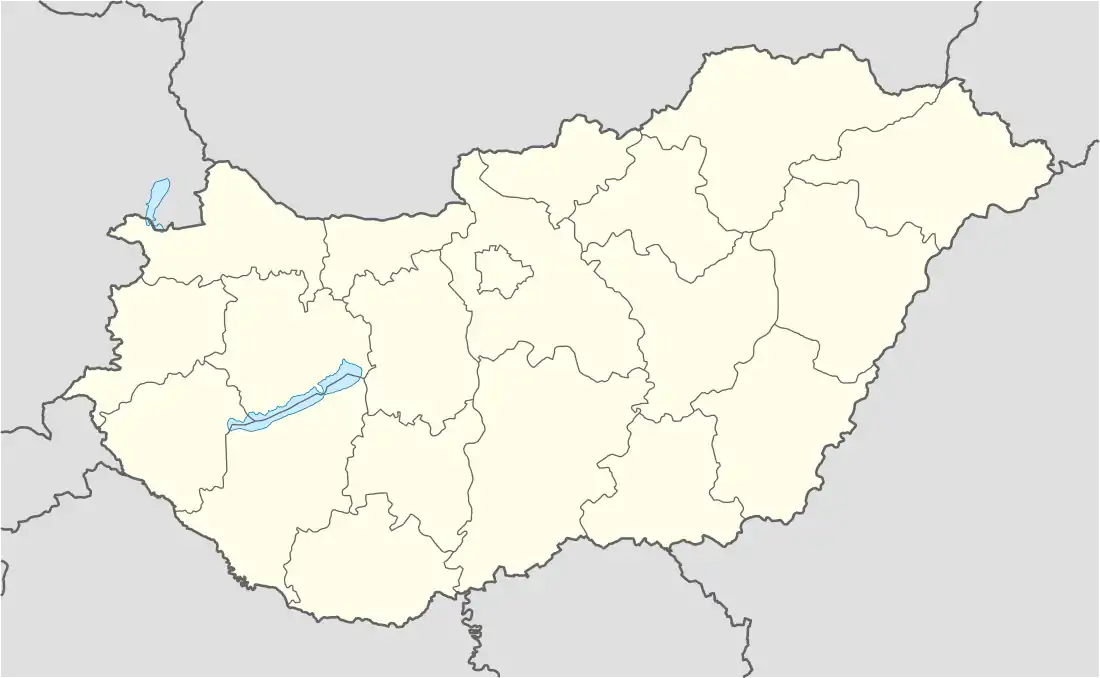Szalonna | |
|---|---|
 Szalonna Location of Szalonna | |
| Coordinates: 48°27′03″N 20°44′26″E / 48.45093°N 20.74045°E | |
| Country | |
| County | Borsod-Abaúj-Zemplén |
| Area | |
| • Total | 20.08 km2 (7.75 sq mi) |
| Population (2004) | |
| • Total | 1,057 |
| • Density | 52.63/km2 (136.3/sq mi) |
| Time zone | UTC+1 (CET) |
| • Summer (DST) | UTC+2 (CEST) |
| Postal code | 3754 |
| Area code | 48 |
Szalonna is a village in Hungary, in the Borsod-Abaúj-Zemplén county.

The Reformed church of Szalonna.
In the village there is an old architectural example of Romanesque art: the church. It consists of two parts. The older is the rotunda on the east side of the recent building, which is younger, but of Árpád age - the village Romanesque church with murals. The rotunda has several relatives of this type in the Carpathian Basin: Herencsény, Bagod-Szentpál, Hidegség. A group of such extended rotunda old churches have a specific characteristic: the six folded inner structure of Karcsa, Gerény and Kiszombor.
Etymology
The name probably comes from Slavic Slověna (Slověn: Slav, maybe a personal name, see also Slověnice). Slověna > Solona > Salona. 1249 Zolouna, Zolovna.[1]
References
Bibliography
- Gerevich T.: Magyarország románkori emlékei. (Die romanische Denkmäler Ungarns.) Egyetemi nyomda. Budapest, 1938. 843 p. --- 32–33. p., LXXXVI. tábla bal alsó kép.
- Gervers-Molnár V.: A középkori Magyarország rotundái. (Romanesque Round Churches of Medieval Hungary.) (Mûvészettörténeti Füzetek, 4.) Akadémiai Kiadó. Budapest, 1972.
- Gerő, L. (1984): Magyar műemléki ABC. (Hungarian Architectural Heritage ABC.) Budapest
- Henszlmann, I. (1876): Magyarország ó-keresztyén, román és átmeneti stylü mű-emlékeinek rövid ismertetése, (Old-Christian, Romanesque and Transitional Style Architecture in Hungary). Királyi Magyar Egyetemi Nyomda, Budapest
External links
- Street map (in Hungarian)
This article is issued from Wikipedia. The text is licensed under Creative Commons - Attribution - Sharealike. Additional terms may apply for the media files.

